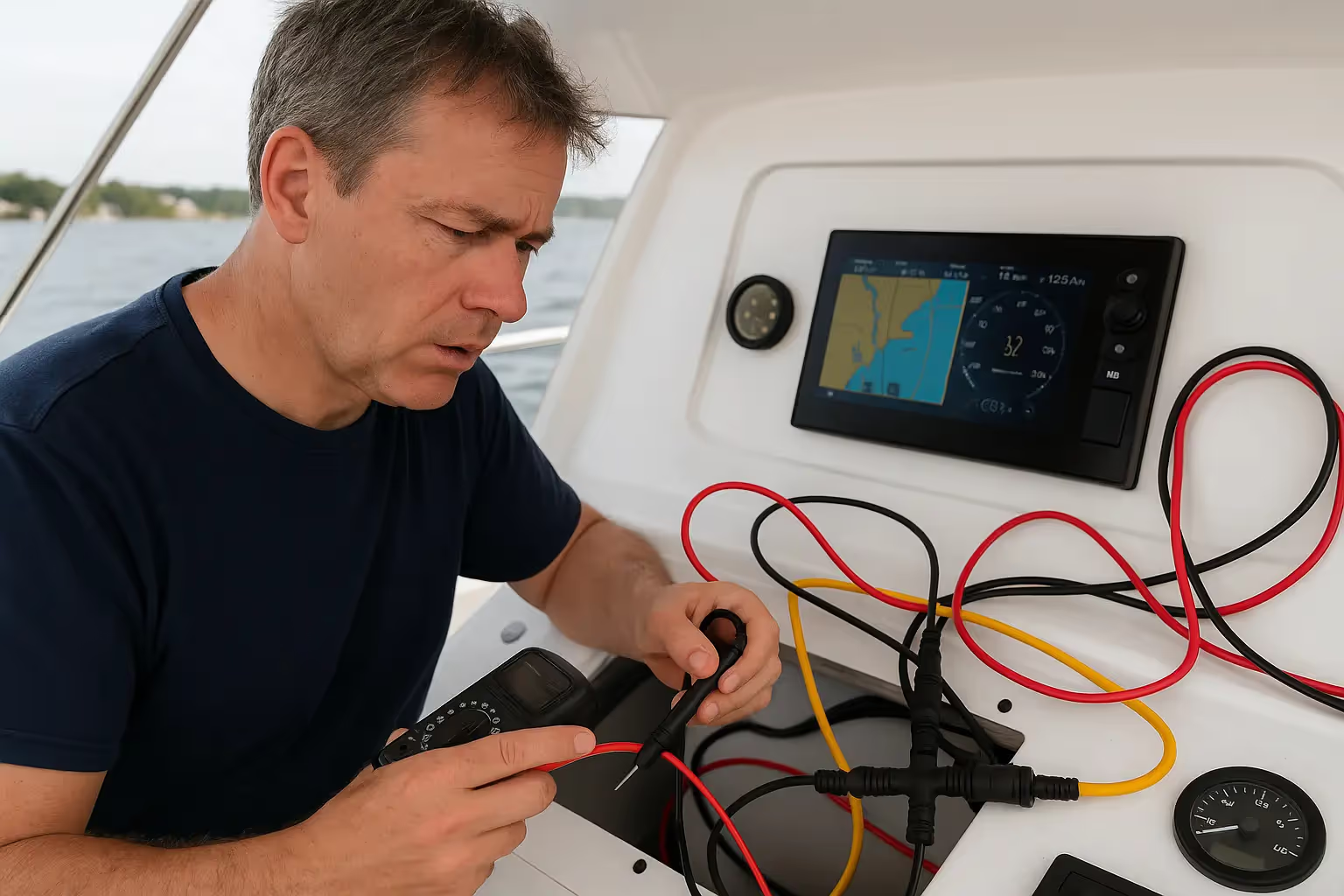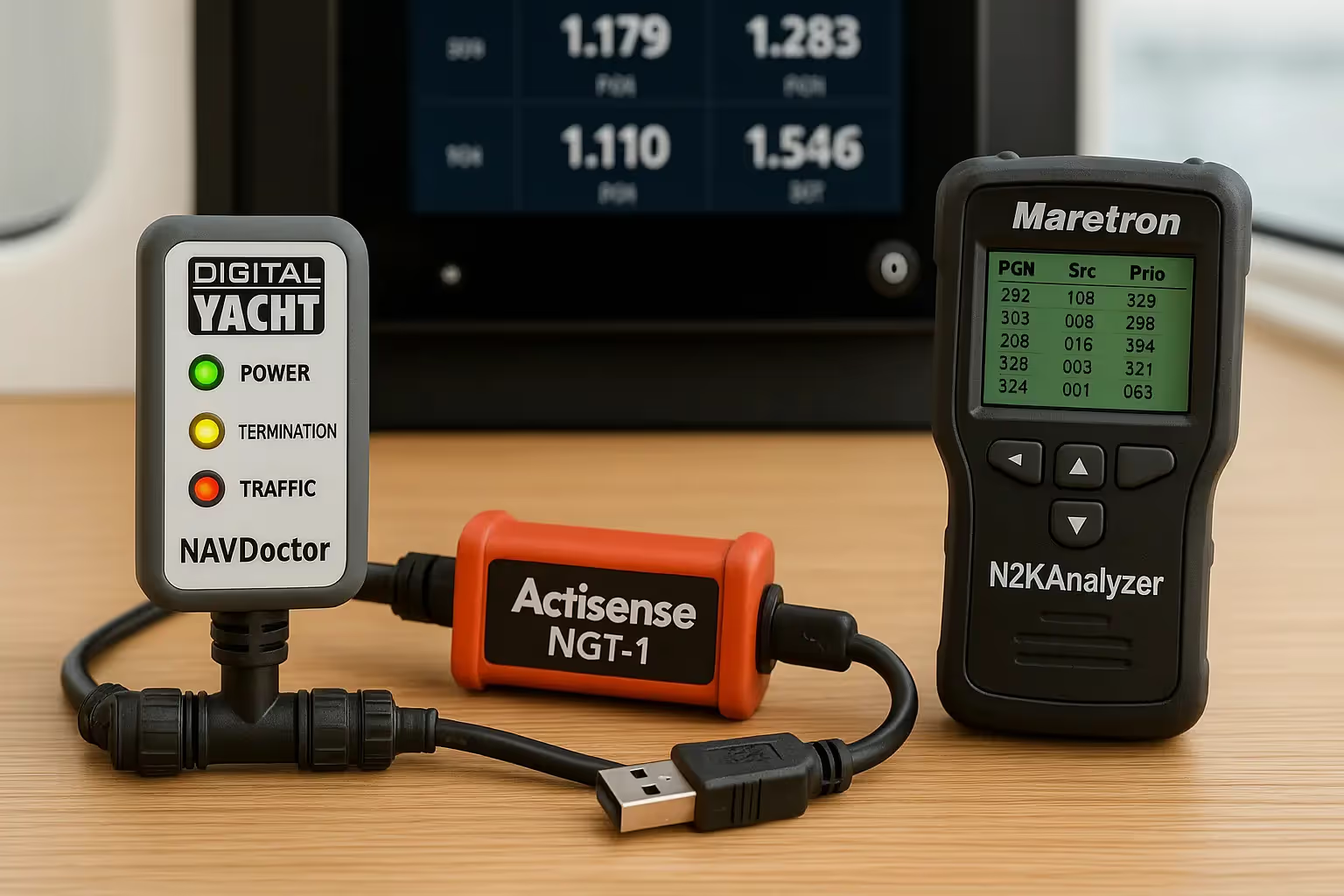8 Knots Every Beginning Sailor Should Know

Knot tying has been around since the beginning of mankind. But it is sailors who turned it into an art form with many practical and decorative uses. There are hundreds of knots, but we will focus on the ones that are most often used on yachts that all beginning sailors should learn and master. These are the essential knots that you’ll learn how to tie in the RYA Competent Crew course.
1. Bowline
The bowline is arguably the best-known and most-used knot onboard on yacht. The bowline forms a secure loop and, if properly tied, will not jam. It’s simple to tie and untie. It can easily and sturdily attach a line to any object. You can use a bowline to form a fixed loop at the end of a line creating a strong and reliable hold.
- Step 1: Form a small loop with a line.
- Step 2: Pass the end of the line through the loop from the under side.
- Step 3: Wrap the end around the standing line and back down through the loop.
- Step 4: Pull on the free end while holding the standing line to tighten the knot.
- Tip: “The rabbit comes out of the hole, around the tree, and back down the hole.”
2. Clove Hitch
The clove hitch is a simple, all-purpose hitch but should not be trusted in critical applications—it can slip if the post rotates or if constant pressure is not maintained. It’s easy to tie and untie and is a useful binding knot.
- Step 1: Wrap the free end of a line around a post.
- Step 2: Cross the line over itself and around the post a second time.
- Step 3: Slip the working end under the last wrap and pull tightly.
3. Rolling Hitch
The rolling hitch is an easy and secure way to fasten a line to a post. It holds firmly in the direction of the standing line. It is derived from the clove hitch, but is significantly more secure. It is often used to secure the wishbone boom to the mast. It’s reliable, effective, and easy to tie. It grips itself, but only in one direction.
- Step 1: Wrap the end of the line around the post.
- Step 2: Repeat the wrap, crossing over the standing line a second time.
- Step 3: Wrap a third time around the post, but this time above the standing line. Do not cross over it.
- Step 4: Pass the free end under the last wrap and pull tightly to secure.
4. Cleat Hitch
A cleat hitch is a knot that is used every time to moor your yacht to secure the line to the cleat on a pier or dock. It will safely secure your yacht and is difficult to come untied accidentally, if tied properly.
- Step 1: Turn the line around the base of the cleat, then bring it back over the top of the cleat.
- Step 2: Make a figure eight, wrapping the line back under the arm of the cleat opposite the first turn, the back over the top of the cleat.
- Step 3: Once you have made a double figure eight, form an underhand loop and slip that loop over the arm of the cleat. This pins the free end under the last wrap.
5. Round Turn and Two Half Hitches
When tying mooring lines to rings or for tying a dinghy ashore, the round turn and two half hitch is the perfect knot. Unlike a bowline, it can be released under tension. It is strong, dependable, and never jams. It is also a knot that will support heavy loads.
- Step 1: Pass the end of the line around the post twice to stabilize the strain while tying the knot.
- Step 2: Go around the standing end to make the first half hitch. Pull it tight.
- Step 3: Continue around the same direction to make the second half hitch.
- Step 4: Pull tightly to secure the knot.
6. Reef Knot
Also known as a square knot, the reef knot can be used for tying the ends of two lines of the same diameter together. It can also be used to tie the foot of the sail that has been reefed. This knot should never be used to tie two lines together that are different sizes—it is unsafe and the lines can pull apart. Make sure that the standing line and the free end exit the knot together.
- Step 1: Tie two over hand knots. First, right over left and then twist.
- Step 2: Then left over right and twist.
- Step 3: Make sure both parts of the line exit the knot together.
7. Sheet Bend
To join two lines of unequal diameter to make a longer line, use the sheet bend and double sheet bends. It is a suitable knot for most non-critical situations. Be sure that the free ends of both lines of the sheet bend are on the same side as the finished knot. The sheet bend is sometimes called a Weaver’s Knot when it is tied using yarn or twine.
- Step 1: Form a loop at the end of a line.
- Step 2: Pass the free end of the line to be joined under the opening of the loop.
- Step 3: Pass around both parts of the first line and back under itself.
- Step 4: Pull to tighten all four ends.
- Step 5: Two wraps around both parts of the first line will create a double sheet bend.
8. Figure of Eight
Used as a stopper knot on the end of a line, the figure of eight is used on halyards to prevent the line from disappearing inside the mast by accident. It can also be used to prevent the end of a line from fraying temporarily.
- Step 1: Pass the tail over itself to form a loop.
- Step 2: Continue under and around the standing end.
- Step 3: Pass the tail down through the loop.
All of these knots are taught in the RYA Competent Crew course and these simple step-by-step instructions can be used as a cheat sheet for practicing. Proper knot tying will make you a valuable member of any sailing crew.
If you are a visual learner, check out these awesome YouTube videos to help you.
















